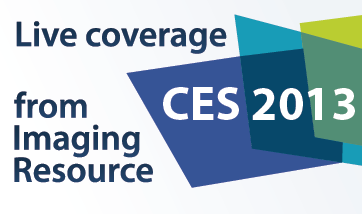Q&A with Fujifilm’s Kayce Baker: Fast development of X-Trans II sensor proves Fuji’s not resting on its laurels
posted Wednesday, January 30, 2013 at 6:00 PM EDT

We here at IR thought Fujifilm's X-Trans sensor was one of the top camera tech innovations of 2012. Now, in the figurative blink of an eye, the company has turned around and launched the X-Trans II sensor plus two new, exciting X-series cameras at the 2013 Consumer Electronics Show. IR founder and editor-in-chief Dave Etchells recently sat down with Kayce Baker, director of marketing for professional digital cameras at Fujifilm North America, to get the scoop behind Fujifilm's blazing pace of development and the success of its X-series cameras, as well as to get some answers to reader questions.
Dave Etchells/Imaging Resource: You announced the X-E1 back at Photokina last September. Now that it's been out for a couple of months, how is it being received by your customers?
Kayce Baker/Fujifilm North America: Fantastic! It's been very well received. The size of it, the functionality, the fact that it ships with the 18-55mm lens, obviously it was a perfect match for the demographic. So it's doing very, very well.
DE: Now that we have the first X-mount zoom, the XF 18-55mm f/2.8-4 R LM OIS, are you seeing a lot of customers picking that up? Or is the attraction for prime lenses still stronger in X-series photographers?
KB: We're actually seeing a lot more of the XF 35mm f/1.4 R being sold. That particular prime lens is, as you know, very crisp and clean, and it has done very, very well. But there is an uptick on the 18-55mm, because this particular lens is very fast, crisp and clean for a zoom lens. So a lot of folks who don't want to carry both, they buy the zoom, and then they covet the 35mm f1.4.
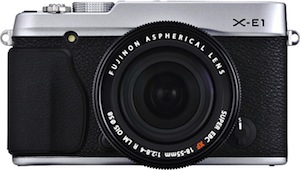
DE: How does the attach rate compare between the XE-1 and the X-Pro1? We're curious whether the X-E1 owner is taking the money they're saving and putting that into more glass and accessories? Or does the lower cost help more X-E1 buyers get into the game, but they're putting all their available budget into the camera?
KB: We're selling more of the 35mm f/1.4 lenses than we have of the original X-Pro1 camera body, which would indicate that the attach rate for X-E1 owners is growing. So I would say that it's a little bit of both. People are saving the money for the lens. In fact, I was actually a little surprised to find that a lot of people are buying their X-E1 body-only and then buying the 35mm prime to go with it.
DE: Wow, really?
KB: Yes! I expected that they would be buying more of the kits, especially because it comes with a zoom lens for that particular demographic. But we do have a lot of body only cameras being sold.
DE: It's interesting that you've actually sold more 30mm primes than all of the X-Pro1 bodies in the market so far.
KB: It's encouraging that our glass is being very well-received.
DE: Are you seeing X-Pro1 owners picking up the zoom as well?
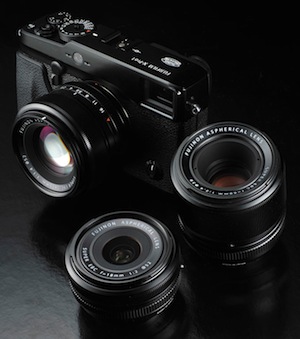
KB: Yes. How is that for a short answer? [laughing]
DE: That's good, very concise! [grins] Along with a lot of other people, we're looking forward to the lenses on the roadmap Fujifilm released last summer: the 55-200mm f/3.5-4.8 OIS and 10-24mm f/4 zooms, along with the 23mm f/1.4, 27mm f/2.8 pancake, and 56mm f/1.4 primes. They're all slated for "early 2013" availability. When can we look forward to seeing those showing up?
KB: We're looking at around April to May availability for the 55-200mm, as well as the 27mm pancake. For the 10-24mm and 23mm f/1.4, more towards the end of the year or the beginning of 2014. Anywhere in that area.
DE: The X-E1 added an external microphone connector. Was that something for which you'd been hearing a lot of demand, and do you have a sense for how much video is being shot by X-series owners?
KB: Yes, lots of demand. And as far as how much video's being shot, it's an interesting question. We originally designed these cameras with less of a focus on video -- we really made them for the photographer needing high quality stills. But I've received a few emails, seen a few blogs, and picked up a lot of different information that suggests a lot of people are using them for video, and they like the video quality. I think that's got a lot to do with the fact that you have manually-controlled lenses, and everything that videographers would want. Videographers are also using a lot of different adapters that let them use their manual Canon, Nikon or Leica M-mount lenses again. Overall, there seems to be a lot of people using X-series bodies for video, and to answer this demand, we came out with the X100S where we've focused a little bit more on that feature set, adding 1080i video at 60 frames per second.
DE: Speaking of which, you've announced two new enthusiast-friendly cameras for the Consumer Electronics Show, the X20 and the X100S. The latter resurrects and updates the hybrid viewfinder that we saw on the original X100. It's got higher resolution, updated optics and 100% frame coverage. But when we tested the X100, we had occassional issues with overlay visibility when we were shooting with the optical viewfinder in bright light. How does the new display compare -- is its backlight any brighter?
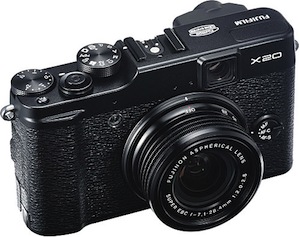
KB: Well, the new display is a lot better in the sense that the Fujinon optics have been upgraded. We've put a lot of time and thought into making sure there's no chromatic aberration or lens issues, and we've updated the lenses on the inside. Have we upgraded the brightness of the overlay? To be honest with you, I'm not sure. We haven't yet received a final production model of the camera and so, at this time, I don't have an answer for that.
DE: Perhaps the factory can turn up the current on the backlight LED. We also understand that you've worked to improve lens flare in the X100S, which was also something we had noticed in the X100. Was that a big challenge to overcome, and how big a difference do you think there is?
KB: We ended up doing that with something we call the lens modulation optimizer. It's mostly achieved in software, and it's able to take some of the fringing on the edges of the lens and clean it up quite considerably. You can see the difference between the 100 and the 100S. [Kacye showed us a couple of prints, and the reduction in flare with the X100S was quite noticeable. We unfortunately don't have the images to share here, though.]
DE: Yes, that's a big difference. You've also introduced a new coating technology, HT-EBC. How does that differ from the earlier EBC coating?
KB: The HT stands for high transmission, and it gives an extra little kick to further reduce ghosting and chromatic aberration.
DE: One of the most interesting features we saw during the X100S presentation was the digital split-image focus assist function. Split image focusing was a great aid in the film days; we're curious about how you managed to recreate that in firmware.
KB: Well, I don't know exactly how the firmware works, but I do know that we're using information from the phase detection pixels to drive this. With phase detection you look at the image as seen from opposite sides of the lens, and match the phase to focus on your subject. From what I understand, we literally take that same phase detection information and, as opposed to using it to drive the autofocus system, we display it so that you can use it to focus manually.
DE: So it's kind of a direct display of what the phase detect pixels are seeing.
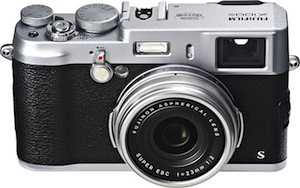
KB: Correct. That's exactly what it is. In fact, the overlay area where you see the split image, the split digital focus? That happens to be the same area that's covered by the phase detection pixels.
DE: Does it take significantly more processing power to create the split image display in real time than it would for a more straightforward focus-peaking display? We're wondering whether that's something you managed to accomplish because you have a more powerful processor, or are you just tapping into those existing pixels and pulling them out?
KB: It doesn't require more processing power, because it really just shows the overlay, so that's a no. It's just a matter of how we ended up using the phase detect data. I believe that nobody has ever used it this way before, so we're the first to offer digital split image focus assist.
DE: It's certainly the first we've seen of it. Switching gears, for the new X-Trans sensor in the X100S, you've got about 25% higher resolution. But we understand, you've also managed about a one-stop advantage in high ISO performance over the previous generation. That's a pretty significant jump.
KB: It's a testament to the sensor, as well as the new EXR Processor II. The X100 used a standard CMOS sensor, where now we're using an X-Trans II sensor. The difference from the original X-Trans is the addition of on-chip phase detection pixels. As you know, X-Trans changed the color filter array to a 6 x 6 grid. That let us get rid of the optical low-pass filter, which increased the resolution. Then we switched to a dual-CPU design, which gave us more processing power to work with. Together, those allow a 30% improvement in signal to noise over the previous model, and a 25% increase in resolution.
DE: You're also claiming some extremely fast auto focus performance for the X100S and the X20, thanks to those on-chip phase detection elements, and the new processor. Does your system use phase detection to get in the ballpark, and then fine tune with contrast detection? Or does phase detection take you all the way to the final focus?
KB: Inside the 36-point phase detection area, it's entirely phase detection. Outside that area, you've got 49 contrast-detection points, and it uses solely contrast detection.
DE: And do you transition between contrast detection and phase detection as you get to lower light levels?
KB: To be honest, I'm not certain. Again, we're still looking at pre-production models. By the time final production models arrive, Fujifilm Japan tells us that it will be even better and faster.
DE: The X20 has an updated viewfinder of its own, with an information overlay that changes color to indicate the camera status. You have red and green LED illumination. Is the red just used to indicate a failure to lock focus? Or will it call your attention to other issues -- perhaps an exposure the camera's metering system considers incorrect, or a potential for camera shake?
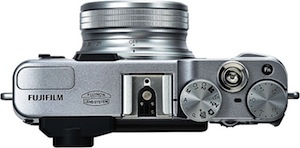
KB: As far as I know, red is used for focus only. I know that we do have a shaky hand symbol that gives you a warning of camera shake.
DE: You brought hybrid phase detection auto focus back to the FinePix line with the HS50EXR. You were the first manufacturer with a hybrid auto focus system, and that kind of disappeared for a while. Was it a matter of not being satisfied of the performance of the earlier models or was it perhaps a cost issue? We're curious why it appeared and then went away for a while.
KB: I don't know. That particular question's unfortunately are more geared towards our Japanese manufacturing people.
DE: A question from a reader: Why not give the S-series cameras a bigger sensor? The X-S1 has a 2/3-inch sensor, and even that would be good. But the reader's saying, "Gosh, with all that zoom power, it would be nice to have a bigger sensor to take advantage of it."
KB: Bigger sensors would be great, but unfortunately, they also bring up the cost of the camera. When you have a camera that is really geared towards a certain price point which customers are comfortable paying, then sometimes you have to sacrifice certain things. And usually, the first thing to go is sensor size because bigger sensors mean more expensive cameras.
DE: There have also been some reader questions about the raw file format for the X series, and what the status might be in getting Adobe to improve their converter for those, and Apple to develop one in the first place.
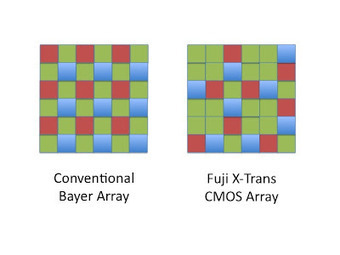
KB: As far as I understand it, we have given each company all the algorithmic information that they need, and which they have requested to be able to make a more powerful and accurate RAW converter process. We've given them everything that we possibly can give them to be able to work with it, and we've had conversations with people about why it's not happening. What we've been told is that it's because there aren't enough of these particular X-Trans cameras on the market for software companies to justify the development expense. So the more cameras that are out there, the more resources they'll be able to put towards making sure that the processor is available and accurate.
Capture One is coming out with a very good RAW processor for X-Trans, however. [Ed. Note: This has been released since our interview.] I've just started using Capture One Pro 7.0.2 myself. It's supposed to be very, very good for our X-Trans sensor. So I'm personally looking forward to seeing more of what they've came up with, because I know that we've also shared our algorithmic data with them as well.
DE: So relative to Apple and Adobe, the ball's in their court...
KB: All I know is that we've given them all the information, yes.
DE: ...and users that are concerned about getting that implemented would do best at this point to make their feelings known to Apple and Adobe. Last question: A lot of people have been going back to shooting film lately. It's a mini resurgence. Now that Kodak's gone from that market, we're curious whether you're interested in expanding your film products, at least from the standpoint of bringing back some of the discontinued films. For example, a reader's asking about Astia 100F.
KB: Oh, wouldn't that be great?
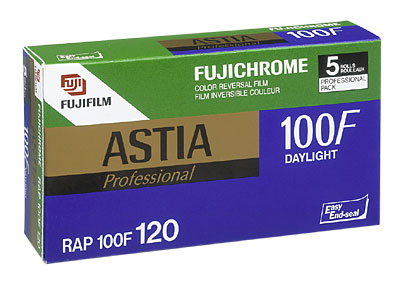
DE: Yes, it would be cool to see... but I don't know if it's feasible. Even though there's a resurgence, it's probably relatively microscopic.
KB: As far as I'm concerned, Astia 100F was the best film that Fuji ever made. In fact, I think it's the best film that's ever really existed. I was very heartbroken to see that film discontinued. As far as RMS value [Ed: a measure of grain size], color reproduction, the structure of the grain... absolutely, bar none, it's the best film ever made. But as with many things that are directed towards professional photographers, it's very finicky. Reversal film doesn't have a lot of latitude, if you will. You really have to be within a third of a stop, one way or the other. If you go beyond that, you're really going to lose out shadows or highlights. Ironically, it's much like digital, which is also very finicky. But because film photography hasn't been focused on in the last decade, a lot of that photographic knowledge of using light meters and making sure you shoot correctly has gone. So negative film has actually been more popular.
The fascinating part is that negative film has got a latitude of, let's say, three to four stops, one way or the other, because of its C-41 process. You can shoot with it, process it and it goes through very quickly... 30 minutes, boom, in and out, and you can adjust it any way you want. You can bring out the shadows, drop down highlights, you have a lot more latitude with it. Reversal film, you don't. And the unfortunate part is that the better films are usually reversal films, and those are really attractive only to a very small segment of a very small segment. As much as we would love to continue to produce and manufacture those films forever, it really comes down to dollars and cents.
DE: You can't make it in small batches; you need to have a production line, and you can't maintain it for that tiny sliver of demand.
KB: And there's a film resurgence but it's nowhere near the volume of 1980's film shooting and film production. And color negative film is much easier to shoot, get results from, and be wowed by because of the fact that you always get something. If you were to put reversal film in a Holga, you've got a 50/50 shot of getting something that you're going to be able to use properly. I know that a lot of film's resurgence comes from lomography, and from classic cameras like Hasselblads and Contaxes appearing on eBay. But you really do have to know how to shoot reversal film. Color negative film, you don't need to know as much.
DE: Basically, it's a very specialized product and because of its demands, a lot of these resurgent film photographers wouldn't have a happy experience with it.
KB: Right. I do appreciate the resurgence. A lot of people -- especially those who grew up in this digital world -- get to a point where they want something that's more tactile, more magical. Those of us who grew up with film know that magical moment of shooting something, and then seeing it come up in the dark room, or you go and you get it processed and the results come back. There's that feeling of "Oh wow! This is awesome!" It's different from going to shoot something and you immediately see what you get as your results. Digital's a great learning tool, but film is a great creative tool. And I think that you want a little bit more of that, but it just comes down to volume, and to dollars and cents.
DE: I could imagine people using a digital camera as a preview device for a film camera. They could fiddle around and get the exposure and say, "OK, that's good. Now, go and take the real shot." Maybe shooting on large format, or something.
KB: Well, you used to be able to use Polaroid instant film to test your shots, make sure you got the right lighting scenario, and so on. I don't know why anybody couldn't use digital to be able to do the same. Especially for reversal film because it's much the same as digital.
DE: Kayce, thank you very much for a great interview -- as always.
KB: You're welcome!
